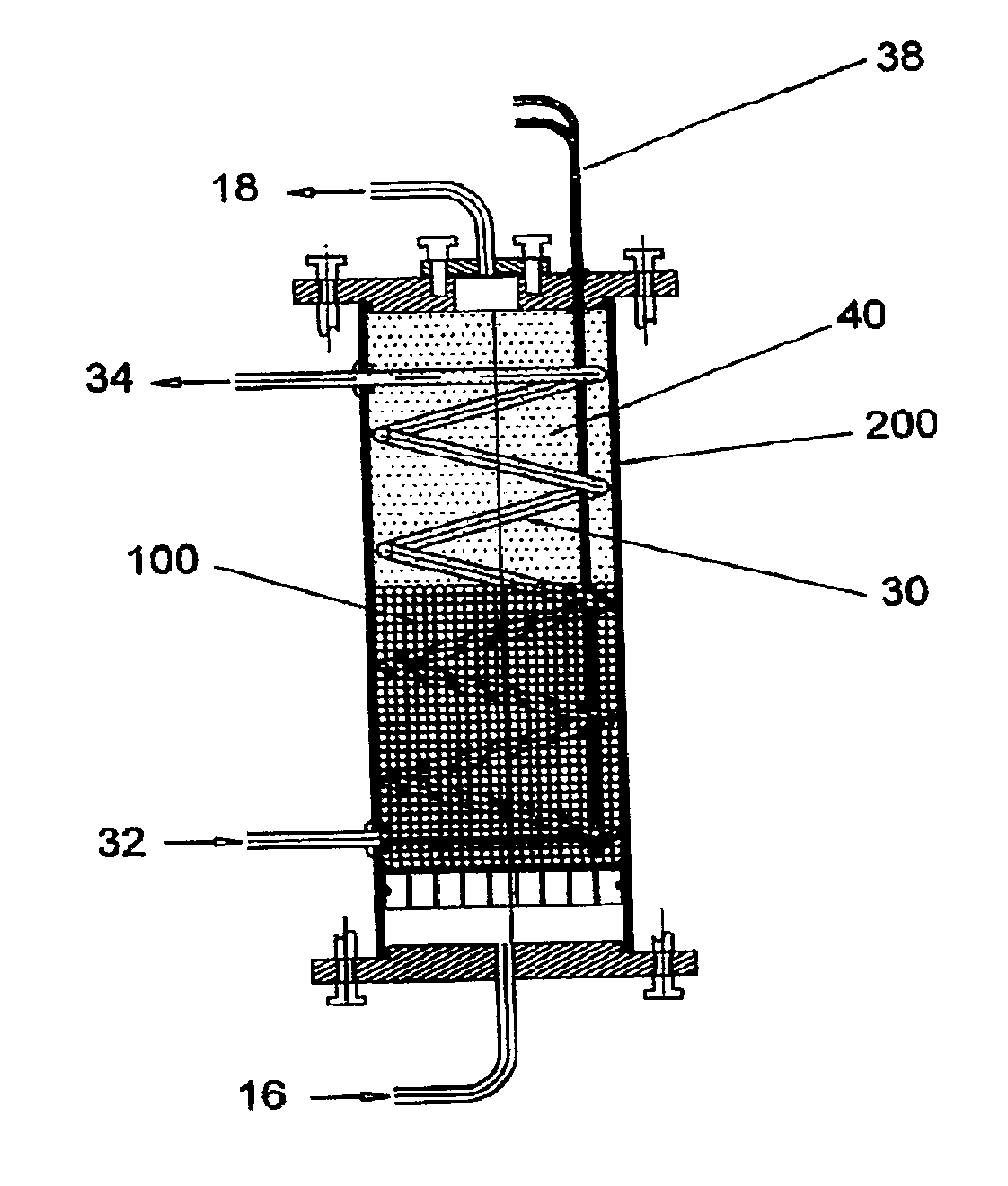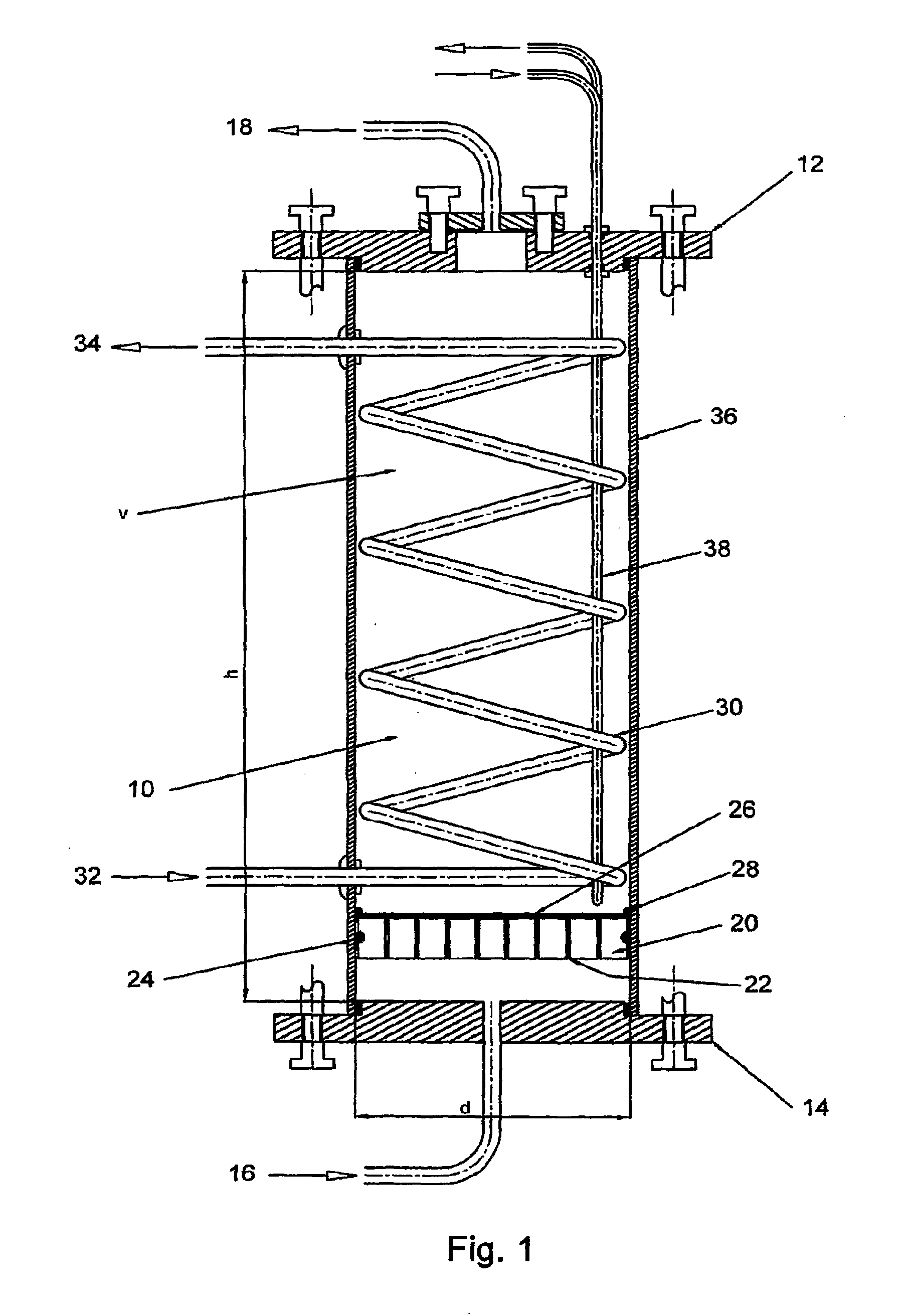Multi-functional chamber housing a biological component
a biological component and multi-functional technology, applied in the field of extracorporeal liver perfusion, can solve the problems of limited treatment, lack of donor organs, and purely artificial systems, which cannot replace all liver functions,
- Summary
- Abstract
- Description
- Claims
- Application Information
AI Technical Summary
Benefits of technology
Problems solved by technology
Method used
Image
Examples
Embodiment Construction
[0125]The invention provides a “functionally modular” chamber in which epithelial cells, e.g. liver cells, can be housed and manipulated through various “development / life cycle” stages. Thus, for example, liver cells can serially be: •Cultured to performance competence;[0126]Cryopreserved; and[0127]Utilized
in the same chamber, by for example, changing “solutions” and altering “conditions”.
[0128]Thus, for example, a biological component, such as, alginate beads containing liver cells, may be prepared and delivered into the “functionally modular” chamber in which:[0129]Initial proliferation to optimal cell mass and performance take place;[0130]Subsequent cryopreservation can occur, and following transportation to a sick patient, and after thawing,[0131]the cells can be perfused, in-line, in the same chamber in an extracorporeal circuit attached to the patient.
[0132]Thus, whilst the chamber (section 1.0) is central to the invention a biological component (section 2.0) is also required ...
PUM
| Property | Measurement | Unit |
|---|---|---|
| working volume | aaaaa | aaaaa |
| pore sizes | aaaaa | aaaaa |
| volume | aaaaa | aaaaa |
Abstract
Description
Claims
Application Information
 Login to View More
Login to View More - R&D
- Intellectual Property
- Life Sciences
- Materials
- Tech Scout
- Unparalleled Data Quality
- Higher Quality Content
- 60% Fewer Hallucinations
Browse by: Latest US Patents, China's latest patents, Technical Efficacy Thesaurus, Application Domain, Technology Topic, Popular Technical Reports.
© 2025 PatSnap. All rights reserved.Legal|Privacy policy|Modern Slavery Act Transparency Statement|Sitemap|About US| Contact US: help@patsnap.com



